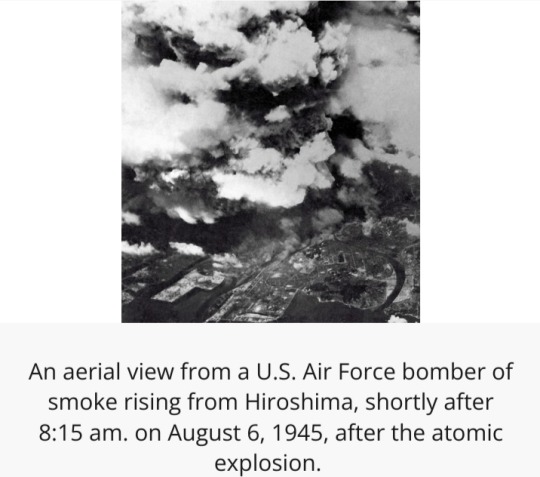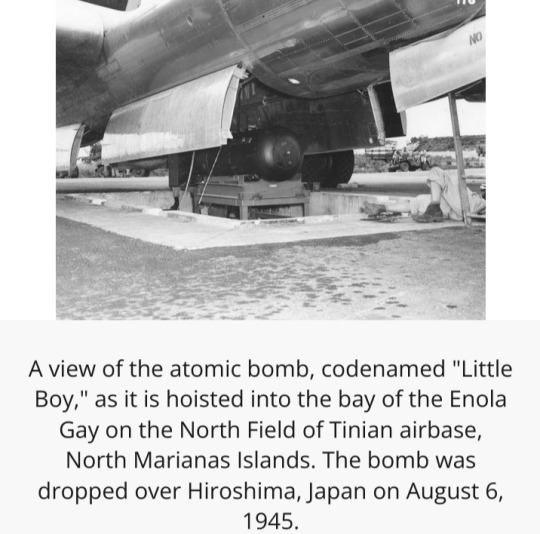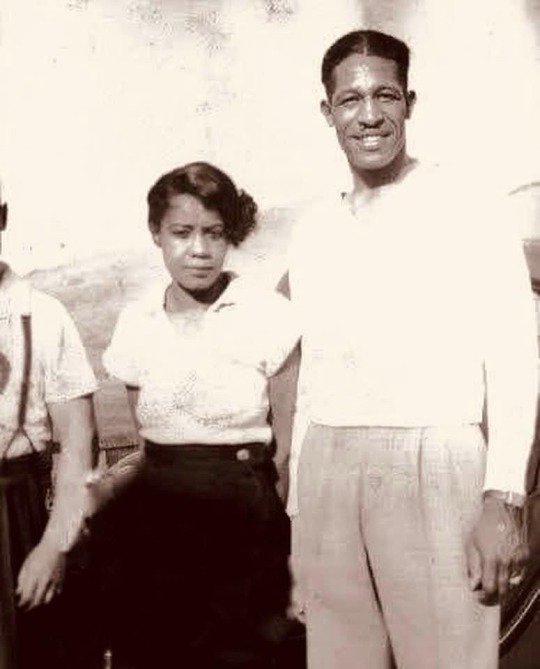#U.S. Army Corps of Engineers
Text
By JON QUEALLY
Common Dreams
Sep 09, 2023
"The Corps' covering for the pipeline company's outrageous safety record and the reviewer's serious conflict of interest have now resulted in a failed effort," said Standing Rock Sioux Tribe Chairwoman Janet Alkire. "They need to start over with adult supervision."
Standing Rock Sioux Tribe Chairwoman Janet Alkire is leading a fresh demand that the U.S. Army Corps of Engineers throw out an ongoing environmental review process of the controversial Dakota Access Pipeline and start again from scratch alongside a superseding call for the pipeline to be shuttered completely.
Following Friday's release of a revised Environmental Impact Statement (EIS), ordered by a federal court, the tribe said the document reveals the entire process has been a failure and that the pipeline—currently operating across their land without consent in what they consider an "illegal" manner by the Energy Transfer company—should be shut down once and for all.
"We're furious that the Army Corps has addressed none of our major concerns during the review process," Chairwoman Alkire said in a statement.
"The pipeline is an imminent threat to the Missouri River, sensitive habitat, and sacred burial sites along the riverbank," she continued. "The oil company's emergency response plans are inadequate, its safety track record is horrendous, and there's been a stunning lack of transparency with Standing Rock throughout the environmental review process, including inaccurate characterizations of tribal consultation."
The Army Corps did not make any recommendations or indicate preferences among the alternatives presented in the new EIS report, which included keeping it in operation, possible rerouting, removing the pipeline by excavation, or abandoning it in place. The Corps said its final recommendations will accompany a final report once the review process is complete, but the Standing Rock Sioux said the process has been seriously flawed.
The tribe said the draft EIS fails to "account for the existence of criminal charges and a host of fines and serious citations" from regulators faced by Energy Transfer. Alkire accused the Corps of "doing all it can to ignore the company’s poor safety record and the high risk" of the pipeline. According to the statement by the tribe:
the entirety of the environmental review process hasn't been taken seriously and is compromised because the Corps selected a company with a clear conflict of interest to prepare the just-released draft EIS. Environmental Resources Management — which also produced a sparkling environmental review for the Keystone XL pipeline, later shelved due to environmental concerns — is a member of the American Petroleum Institute. That organization previously filed a legal brief in support of DAPL in Standing Rock’s suit against the Army Corps.
Moreover, Environmental Resources Management has contracted with at least five separate companies with an ownership interest in DAPL.
The release of the EIS triggers a 45-day public comment period and the Standing Rock Sioux Tribe is now requesting public support in opposition of the project.
"The Corps' covering for the pipeline company's outrageous safety record and the reviewer's serious conflict of interest have now resulted in a failed effort," said Alkire of the current process. "They need to start over with adult supervision."
Amy Mall, senior advocate at NRDC, said her group stands "in solidarity with the Standing Rock Sioux Tribe in opposing this dirty and dangerous pipeline that harms the climate and threatens the primary water source for the Tribe."
"The Army Corps must consider all of the risks of this pipeline, make all significant environmental information available without redactions, and honor the Tribe’s treaty rights," Mall added. "We call on the Corps to shut it down."
Our work is licensed under Creative Commons (CC BY-NC-ND 3.0). Feel free to republish and share widely.
JON QUEALLY
Jon Queally is managing editor of Common Dreams.
Full Bio >
#standing rock sioux tribe#dakota access pipeline#u.s. army corps of engineers#fossil fuels#climate crisis#climate change#NRDC
116 notes
·
View notes
Text


On 6 August 1945, during World War II (1939-45), an American B-29 bomber dropped the world’s first deployed atomic bomb over the Japanese city of Hiroshima.
The explosion immediately killed an estimated 80,000 people; tens of thousands more would later die of radiation exposure.
Three days later, a second B-29 dropped another A-bomb on Nagasaki, killing an estimated 40,000 people.
Japan’s Emperor Hirohito announced his country’s unconditional surrender in World War II in a radio address on August 15, citing the devastating power of “a new and most cruel bomb.”
The Manhattan Project
Even before the outbreak of war in 1939, a group of American scientists — many of them refugees from fascist regimes in Europe — became concerned with nuclear weapons research being conducted in Nazi Germany.
In 1940, the U.S. government began funding its own atomic weapons development program, which came under the joint responsibility of the Office of Scientific Research and Development and the War Department after the U.S. entry into World War II.
The U.S. Army Corps of Engineers was tasked with spearheading the construction of the vast facilities necessary for the top-secret program, codenamed “The Manhattan Project” (for the engineering corps’ Manhattan district).

Over the next several years, the program’s scientists worked on producing the key materials for nuclear fission — uranium-235 and plutonium (Pu-239).
They sent them to Los Alamos, New Mexico, where a team led by J. Robert Oppenheimer worked to turn these materials into a workable atomic bomb.
Early on the morning of 16 July 1945, the Manhattan Project held its first successful test of an atomic device — a plutonium bomb — at the Trinity test site at Alamogordo, New Mexico.
No Surrender for the Japanese
By the time of the Trinity test, the Allied powers had already defeated Germany in Europe.
Japan, however, vowed to fight to the bitter end in the Pacific, despite clear indications (as early as 1944) that they had little chance of winning.
In fact, between mid-April 1945 (when President Harry Truman took office) and mid-July, Japanese forces inflicted Allied casualties totaling nearly half those suffered in three full years of war in the Pacific, proving that Japan had become even more deadly when faced with defeat.
In late July, Japan’s militarist government rejected the Allied demand for surrender put forth in the Potsdam Declaration, which threatened the Japanese with “prompt and utter destruction” if they refused.

General Douglas MacArthur and other top military commanders favored continuing the conventional bombing of Japan already in effect and following up with a massive invasion, codenamed “Operation Downfall.”
They advised Truman that such an invasion would result in U.S. casualties of up to 1 million.
In order to avoid such a high casualty rate, Truman decided – over the moral reservations of Secretary of War Henry Stimson, General Dwight Eisenhower and a number of the Manhattan Project scientists – to use the atomic bomb in the hopes of bringing the war to a quick end.
Proponents of the A-bomb — such as James Byrnes, Truman’s secretary of state — believed that its devastating power would not only end the war but also put the U.S. in a dominant position to determine the course of the postwar world.
'Little Boy' and 'Fat Man' Are Dropped

Hiroshima, a manufacturing center of some 350,000 people located about 500 miles from Tokyo, was selected as the first target.
After arriving at the U.S. base on the Pacific island of Tinian, the more than 9,000-pound uranium-235 bomb was loaded aboard a modified B-29 bomber christened Enola Gay (after the mother of its pilot, Colonel Paul Tibbets).
The plane dropped the bomb — known as “Little Boy” — by parachute at 8:15 in the morning.
It exploded 2,000 feet above Hiroshima in a blast equal to 12-15,000 tons of TNT, destroying five square miles of the city.
Hiroshima’s devastation failed to elicit immediate Japanese surrender, however, and on August 9, Major Charles Sweeney flew another B-29 bomber, Bockscar, from Tinian.
Thick clouds over the primary target, the city of Kokura, drove Sweeney to a secondary target, Nagasaki, where the plutonium bomb “Fat Man” was dropped at 11:02 that morning.

More powerful than the one used at Hiroshima, the bomb weighed nearly 10,000 pounds and was built to produce a 22-kiloton blast.
The topography of Nagasaki, which was nestled in narrow valleys between mountains, reduced the bomb’s effect, limiting the destruction to 2.6 square miles.
Aftermath of the Bombing

At noon on 15 August 1945 (Japanese time), Emperor Hirohito announced his country’s surrender in a radio broadcast.
The news spread quickly.
“Victory in Japan” or “V-J Day” celebrations broke out across the United States and other Allied nations.
The formal surrender agreement was signed on September 2, aboard the U.S. battleship Missouri, anchored in Tokyo Bay.
Because of the extent of the devastation and chaos — including the fact that much of the two cities' infrastructure was wiped out — exact death tolls from the bombing of Hiroshima and Nagasaki remain unknown.
However, it's estimated roughly 70,000 to 135,000 people died in Hiroshima and 60,000 to 80,000 people died in Nagasaki, both from acute exposure to the blasts and from long-term side effects of radiation.



#Bombing of Hiroshima and Nagasaki (1945)#6 August 1945#atomic bomb#Hiroshima#Nagasaki#B-29 bomber#A-bomb#U.S. Army Corps of Engineers#The Manhattan Project#nuclear weapons research#Office of Scientific Research and Development#War Department#World War II#WWII#uranium-235#plutonium (Pu-239)#nuclear fission#plutonium bomb#J. Robert Oppenheimer#Oppenheimer#Trinity test#Potsdam Declaration#General Douglas MacArthur#Operation Downfall#Henry Stimson#General Dwight Eisenhower#Enola Gay#Colonel Paul Tibbets#Bockscar#V-J Day
32 notes
·
View notes
Text
youtube
A 30-foot-long juvenile sperm whale washed up on Rockaway Beach on December 13, making it the sixth whale to be stranded in New York since October 20, according to the Atlantic Marine Conservation Society. Video shows surfers trying to push the whale back into the water, but the animal ultimately died.
The New York City Department of Parks & Recreation, the Atlantic Marine Conservation Society, the New York State Department of Environmental Conservation, and the U.S. Army Corps of Engineers reportedly responded to the scene.
The whale was slated to undergo a necropsy to determine its cause of death this week, according to the Atlantic Marine Conservation Society. Of the 6 whales beached, this was the 3rd that was specifically a sperm whale — a calf that was stranded on October 21 had to be euthanized, and another calf that was stranded on December 5 was pushed back into the water, only to later die on a New Jersey beach.
A spokesperson for NOAA said, ‘The best way to assist these animals, and keep them and yourself safe, is by calling trained responders and maintaining a 150-foot distance. Never attempt to return a large whale or other marine mammal back to the water without guided support from trained responders. Additionally, sperm whales are listed as endangered under the Endangered Species Act.’ The Marine Mammal Protection Act also makes touching and feeding marine mammals illegal.
#Earth #Environment #ClimateCrisis #NowThis
#now this earth#now this#Solarpunk#tidalpunk#beached whale#tw animal death#cw animal death#sperm whale#marine life#ocean#sea#Rockaway Beach#New York#USA#Atlantic Marine Conservation Society#surfers#New York City Department of Parks & Recreation#U.S. Army Corps of Engineers#New Jersey#NOAA#Marine Mammal Protection Act#endangered species#Endangered Species Act#Youtube
6 notes
·
View notes
Text


#shirtless#muscle#tattoos#ballcap#baseball cap#soldier#us army#pushups#corps of engineers#military#u.s. army
25 notes
·
View notes
Text










#adult collectors#adult collectibles#collectables#figures#toys#vehicle#army men#bmc toys#palm trees and ferns#army corps of engineers#anti-aircraft combat tanks#army camp equipment#amphibious landing crafts#color variations#u.s. military field artillery#WW2 axis ambush#made in usa#16pack#3pack#4pack#10pack#package art
3 notes
·
View notes
Text
Valentine's Day Discharge Announcement
Yesterday, on Valentine’s Day, the estuaries did not receive sweet news. The U.S. Army Corps of Engineers, Jacksonville District, working to manage water together with their local sponsor, the South Florida Water Management District, announced that they will begin significant discharges (1800+/- cfs) from Lake Okeechobee (16.37 ft.) beginning Saturday, 2-17-24.
The aerials below taken by my…

View On WordPress
#2508#announced that they will begin significant discharges#Ed Lippisch aerials February 2024#Empty SFWMD governing board seat#Jacksonville district#punishment#the South Florida Water Management District#The U.S. Army Corps of Engineers#Valentine&039;s Day Discharge Announcement#working to manage water together with their local sponsor
0 notes
Link
Puerto Rico Board Denies EPA Request to Dump Dredge Waste in Ocean
Shipping Channel Plan for LNG Facility Harms Communities, Corals, Marine Life
SAN JUAN, Puerto Rico— The Puerto Rico Planning Board has formally objected to the federal government’s plan to dispose of millions of cubic yards of dredge waste in five ocean sites around Puerto Rico without further environmental studies.
The board did not find the Environmental Protection Agency’s plan to be sufficient for preventing harm to coral reefs, which play a role in preserving fisheries and protecting communities and infrastructure from severe storms.
The EPA and the U.S. Army Corps of Engineers had applied to the board for a “certification of consistency,” which would have confirmed that their plan was in line with the Puerto Rico Coastal Management Program. The federal plan would allow the ocean dumping of waste created by dredging the San Juan Bay shipping channel, which would give large ships access to a new liquified natural gas terminal.
“This request to dispose of the contaminated material from the San Juan Bay around Puerto Rico, without consulting with the communities that have opposed the dredging, is contrary to the vision expressed by the EPA to pay more attention to environmental justice communities,” said Federico Cintrón Moscoso, director of the organization El Puente-Enlace Latino de Acción Climática. “Before this plan goes any further, we demand that all activities related to this dredging comply with an environmental impact statement in which the communities and affected groups have a chance to participate.”
The San Juan Bay Dredging Project involves dredging and disposing of more than 2 million cubic yards of sediment. Dumping this waste could contaminate ocean ecosystems with heavy metals like arsenic, cadmium and mercury, and other harmful chemicals such as polycyclic aromatic hydrocarbons and polychlorinated biphenyls.
Community and conservation groups — El Puente, CORALations and the Center for Biological Diversity — filed a federal lawsuit in August over the Army Corps’ plans to expand the shipping channel. The lawsuit challenges the Corps’ failure to prepare an environmental impact statement analyzing the effects gigantic tankers and the new LNG terminal will have on local communities, corals and wildlife. The suit also contests the Corps’ plan to dispose of some dredged material in the Condado Lagoon nature reserve, which is important habitat for manatees.
“Puerto Rico’s Planning Board deserves kudos for denying the EPA’s dirty dumping plan,” said Catherine Kilduff, an attorney at the Center for Biological Diversity. “Dumping waste onto corals in the ocean doubles the destruction from dredging projects. The San Juan dredging project saddles Puerto Rico with a dependence on fossil fuels and harm to communities and eco-tourism, and ocean disposal magnifies that damage.”
Sediment plumes leaking from barges carrying dredge waste often smother corals and other bottom-dwelling wildlife. Reefs along the north coast of San Juan near the proposed dumping sites provide habitat for seven species of Endangered Species Act-listed corals, including elkhorn, staghorn and pillar corals. Some of these areas are federally designated critical habitat for elkhorn and staghorn corals as well as proposed critical habitat for the other species.
Coral reefs — which are extremely biodiverse — also support several other marine species, providing habitat for more than 25% of all life in the ocean.
El Puente de Williamsburg, Inc. – Enlace Latino de Acción Climática is a group concerned about the impacts of climate change in the archipelago of Puerto Rico.
CORALations is an award-winning organization founded in Puerto Rico in 1995 to work with Caribbean communities to protect and restore their coral reefs.
The Center for Biological Diversity is a national, nonprofit conservation organization with more than 1.7 million members and online activists dedicated to the protection of endangered species and wild places.
#puertorriqueños#puerto rico#despierta boricua#puerto ricans#boricuas en el mundos#Puerto Rico Board Denies EPA Request to Dump Dredge Waste in Ocean#wake up#boricuas#this is puerto rico#news of Puerto Rico#The EPA and the U.S. Army Corps of Engineers#Environmental Protection Agency
1 note
·
View note
Text

From the notes of Capt. Alfred Jones:
"Davie was a bus and the 'Flying Fortress' moniker seemed to pass her by, but it was a ship with a brave crew. The trudge of getting back to England from enemy territory is a story for another day. I miss her and sometimes I miss the boys we lost that day."
-✪- -✪- -✪-
B-17F "Dear Davie":
*U.S. Army Model B-17F-65-BO
Air Corps Serial No. 42-29670
Delivered Cheyenne 31/1/43; Pueblo 18/2/43; Salina 15/2/43; Brookley 19/3/43; Smoky Hill 23/3/43; Dow Field 18/4/43.
Assigned to the 333rd Bomb Squadron/94th Bomb Group [TS-L] "DEAR DAVIE" 22/4/43; Missing in Action near Hamburg 25/7/43 with Alfred "Comet" Jones, **Co-Pilot: Daryl "Speed" Reed, Navigator: Richard Reed, Bombardier: Charlie Marstaller; Radio Operator: Johnathan Graves, Flight Engineer/Top Turret Gunner: Clyde "Pepsi" Ray, Ball Turret Gunner: William Ortlieb, Waist Gunner: Leslie Lipsey, Waist Gunner: Paul Rapoport, Tail Gunner: Thomas Pugh (6 Killed in Action); "DEAR DAVIE" lost to flak/anti-aircraft fire, crashing near Uetersen, 15 miles NW of Hamburg, Germany.
-✪- -✪- -✪-
[nerd things & acknowledgements below cut]
Notes on the B-17F...
The B-17F was an upgrade of the previous E model, with several notable changes: A one- or two-piece plexiglas nose cone, as opposed to the ten-paneled cone of previous versions. Reinforced landing gear allowed for a greater maximum payload, from 4,200 lb (1,900 kg) of ordnance to 8,000 lb (3,600 kg). Flight and combat range of the F model was improved by 900 mi (1,400 km) with the addition of nine self-sealing rubber fuel cells in the wing root, aka, "Tokyo tanks". The F model was generally characterized by being tail-heavy - which lead to part failure - and woefully undefended from the front; the early F models had no front-facing armament, leaving a 60° blind spot to the direct front of the aircraft - a flaw which was exploited by German pilots, who held air superiority. Later F models would see a list of possible available modifications (factory and field) such as inserting two .50 caliber machine guns into the nose cone to solve the blind spot. Other modifications to later F models were bulged cheek turrets, as opposed to the window-mounted guns of earlier iterations, and the available addition of the iconic "Bendix" chin turret. The chin turret is far more common on the subsequent G "gunship" variant. ("Dear Davie" is an early F model without the nose mount, bulged cheeks, or chin turret.)
*This model production block, serial no., and fate are borrowed from real-life B-17F #42-29670, "Thundermug." "Thundermug" was an aircraft that originally served in the 333rd Bomb Squadron/94th Bomb Group alongside my great-grandfather and his usual steed, "The Gremlins Hotel." It was transferred to the 544th BS/384th BG, at which point it went Missing in Action over Hamburg from flak/aa-fire; 8 of its crew became POWs while 2 were KIA. I have had the honor to speak to descendants of both of its crews and help them research "Thundermug"; I wish to voice a mere glimpse of their stories in a unique way.
**All names of Alfred's crew are either cobbled-together family names throughout our history here or entirely fictitious - though some were inspired by real people whom I grew up with stories of. All inspirations were individuals that lived good lives post-war.
#alpha romeo tango#gremlin's things with wings#alfred f. jones // daring to fly#hetalia#historical hetalia#hetalia headcanons#aph america#hws america#alfred f jones#hey guys crucify me if you must#i'm really proud of this drawing#but i also understand it's pretty nerdy and the headcanon does deal with something a little tragic#but i'm hurling this to tumblr motherless and fatherless for your judgment#this took a few hours haha#love you guys for real#i really love bombers guys sorry for being autistic on main
1K notes
·
View notes
Text
Reminder if you live in the US and you haven't done it do this today and watch the video on there!!!! Comment period for the DAPL environmental impact statement draft ends December 13th. Do it now!!!! It autofills a draft to send you don't hardly have to do anything to use your voice to tell the USACE to take the pipeline one and protect the people of standing rock and everyone else downstream on the Missouri River!!!!
153 notes
·
View notes
Text

History They Didn't Teach You In School
Scholars have left him out of the history books and Hollywood couldn’t be bothered to acknowledge his existence either. He was Howard Hughes’ top engineer and lifelong best friend. This is about Frank Mann, the hidden genius behind much of Howard Hughes’ success in the world of aviation and mechanics. Frank Calvin Mann (November 22, 1908 – November 30, 1992) was an African American engineer who was known for his participation in many Howard Hughes's projects including the Spruce Goose. He also starred in the Amos 'n' Andy radio show. Apparently, his lifelong friendship with Hughes was instrumental in opening doors for Mann's exceptional talents.
A native of Houston, Texas, Frank Calvin Mann's parents wanted him to become a schoolteacher, but from childhood, he had a natural ability to fix things. At age 11, he had his own mechanic shop. As a teenager, he worked alongside airplane mechanics, repairing engines. By the ago of 20, he had designed and built several of his own Model-T cars. It was unheard of in the 1920s for a Black man to have anything to do with cars, trains, or airplanes. His life-long friend Howard Hughes was instrumental in opening doors for Mann's exceptional talents.
Mann attended the University of Minnesota and UCLA where he earned a mechanical engineering degree. World War II equipment that revolutionized military weaponry would not exist if not for his involvement. Incredibly, few Americans are aware of Frank Mann. He was the first Black commercial pilot for American Airways. He was also a distinguished military officer. In 1935, following Italy’s invasion of Ethiopia, Frank Mann flew reconnaissance missions for the Ethiopian army.
He served in the World War II Army Air Corps and was the primary civilian instructor of the famous Tuskegee Airmen in 1941. He left Tuskegee after a rift with the U.S. government, which didn't want the Squadron, an all-Black unit, flying the same high caliber of airplanes as their White counterparts. An angry Mann had refused to have his men fly old "World War I biplane crates," because his airmen had proven themselves as equals.
Though they were being given inferior equipment and materials, their squadron never lost a plane, bomber, or pilot, and they were nicknamed the "Red Tails.” After the war, Mann was instrumental in designing the first Buick LeSabre automobile and the first communications satellite launched for commercial use.
His pride and joy was a miniature locomotive enshrined in the Smithsonian Institute, Mann also played a principal role in the Amos ‘N’ Andy radio show. He moved back to his hometown in the 1970s.
Frank Mann died November 30, 1992 in Houston.
90 notes
·
View notes
Text
Let's Stand Again With Standing Rock

It's time to take action and stop the Dakota Access pipeline (DAPL)! It's been over six years since DAPL began carrying oil and nearly a year and a half since the U.S. Supreme Court rejected the pipeline operator Energy Transfer's attempt to avoid producing a required Environmental Impact Statement (EIS). Today, in violation of a separate court order, DAPL continues to operate illegally, without a federal easement. Finally, after interminable delay, the U.S. Army Corps of Engineers has finally released an extremely problematic draft EIS for public input.
That's where you come in. You now have just a few weeks to submit your public comment demanding the Corps shut this pipeline down and require a new, valid EIS. Please stand with Standing Rock in this critical moment and write to the Army Corps right now.
Now that the EIS has been released, we can confirm what we already suspected. Prepared by a member of the American Petroleum Institute -- clear conflict of interest -- the EIS addresses none of Standing Rock's many grave concerns about DAPL. Those include DAPL's imminent threat to the Missouri River, big problems with Energy Transfer's emergency response plans, Energy Transfer's horrendous safety track record, continued lack of transparency with Standing Rock throughout the environmental review process, inaccurate characterizations of tribal consultation, and sensitive habitat and sacred burial sites along the riverbank.
Earlier this year, four U.S. senators including Bernie Sanders submitted a letter to the Corps seeking an explanation. The reply from Assistant Secretary of the Army for Civil Works Michael Connor did not adequately or honestly address the tribe's complaints. Standing Rock replied, pointing out the flaws in approach and demanding redress.
For now, it's up to us to lend a hand. We must flood the Army Corps with a single, unified message: This illegal pipeline's operations must be terminated and the Army Corps must start over with a legitimate environmental review. In the midst of a climate emergency, let's defend sacred ground and safeguard Unci Maka (our Grandmother Earth). This may be our last, best chance to end DAPL once and for all. Please take action now.
#standing rock#dapl#indigenous rights#lakota#public comment#environmentalism#fossil fuels#big oil#pipelines#climate crisis
93 notes
·
View notes
Text
It's Christmas, and I'm reading "Masters of the Air," so it's not surprising that I've been thinking about my grandpa today. He was a staff sergeant in the Army Air Corps during WWII. He served as a radio operator on cargo planes flying The Hump between India, Burma, and China.

On September 16, 1940, the first peacetime draft in U.S. history was enacted, and his name came up. He went to Fort Knox for training, and on a day off, he went to Mammoth Cave. When he came out after the tour, he found out Japan bombed Pearl Harbor.
He went to flight school and did well. He had a test flight on a day with terrible weather and failed. He was the final flight that went out that day. The rest of the exams were cancelled because of the conditions. But you didn't get a second chance. I think he always felt a little bad about that, but maybe that rainstorm saved his life.
He dated a girl who worked on the training base. All his friends were getting assigned overseas, and he was still stuck in North Dakota. He found out she had been putting his name on the bottom of the pile so he could stay longer. (No, this was not my grandma.)
He told me a story about all the college kids who ended up in his unit. Him and the other guys would ask, "What did you major in?" And a lot of times the answer was engineering. "That's great," they would say. "Go engineer that broom over there." (Doesn't that sound like something the rest of Easy would say to Webster if he had studied engineering?)
He was one of the last GIs sent home in 1946, because it was uncertain whether there would be a war with China. The first thing he did when he got back to Indiana was buy a car. My mom's friend's mom said all the girls in town were a little bit in love with him when he came home. He must have had fun, because he didn't start dating my grandma for another three years.
He lived a long and happy life, but there are times now that I am older, that I've had things happen to me, that I wish he were here and we could talk. He said he would never have chosen to go to war, but he was glad he had the experience.
49 notes
·
View notes
Text

This German twin-engined Arado Ar-234, jet propelled bomber was abandoned by Luftwaffe troops in hanger of German airfield captured by 111 Corps, 3rd U.S. Army, at Manching, Germany.
45 notes
·
View notes
Text
Battleship Texas much closer to securing permanent home in Galveston
The first step is a ten-year lease with the port, coming in at $20,000 a month or more depending on the weather
By Chris Gray

"This artist's rendering projects what the USS Texas could look like once it is safely housed along the heart of Galveston's waterfront. "
"Battleship Texas cleared an important hurdle in its quest for a permanent home this week. During its regular meeting on Tuesday, the Galveston Wharves board of trustees authorized the creation of a lease between the Port of Galveston and the Battleship Texas Foundation, which operates and maintains the historic warship.
'It’s a big step for us,' said Tony Gregory, the foundation’s president and CEO. 'We feel like it's a big win. It’s taken a while to convince the port that we should be where we're going to go, but in the end their leadership responded. We think we have a good agreement, and we're excited to move forward on it.'
The proposed lease would be for 10 years with two additional 10-year options, explained port director and CEO of Galveston Wharves Rodger Rees. Once it has been drafted and signed, which Rees said could happen at the board’s next meeting later this month, the foundation would pay the port $20,000 per month in rent; plus $1.2 million (another $20,000 a month) in case an extreme-weather event or other dire scenario forced the port managers to take drastic measures with the ship like towing her out to sea.
Now, 'there's some hoops they've got to jump through but not ours,' Rees said. 'What we did is try to help them with their permitting process by giving them a home.'

The ship, which served with distinction in both World Wars, was towed from the San Jacinto Monument to a dry-dock facility in Galveston's harbor in August 2022.
Greg Eckmann Photography/Battleship Texas Foundation
According to Gregory, now that the foundation has struck a deal with the port, it can finalize its agreement with Landry’s, Inc. for the multibillion-dollar company founded by island native and Houston Rockets owner Tilman Fertitta to manage the ship’s day-to-day operations, effectively adding it to a portfolio that also includes Kemah Boardwalk and Pleasure Pier. The foundation plans to permanently berth the ship in the area around Piers 19 and 20, the most commercial area of the port and property already controlled by Landry’s.
'Landry’s is excited about the positive progress made to secure a permanent home for the Battleship Texas in Galveston,' said Landry's deputy general counsel Dash Kohlhausen in a statement. 'We look forward to continue working with the City, the Wharves Board, and the Battleship Texas Foundation to make this a reality for Galveston.'
The next step for the foundation, which towed the USS Texas to Galveston from its longstanding home at the San Jacinto Monument in August 2022, is to secure the necessary permits from the trio of agencies which share jurisdiction over the waterway: the U.S. Coast Guard; U.S. Army Corps of Engineers; and Galveston Texas City Pilots, an association of ship captains whose boats escort larger vessels in and out of the port. It could take up to a year for those permits to be approved, Rees said.
Meanwhile, the ship, which served in both World Wars — notably off Omaha Beach during D-Day and as part of Operation Torch in North Africa — has been undergoing an estimated $60 million in dry-dock repairs since arriving at the Gulf Copper facility on Pelican Island. According to Gregory, those repairs are scheduled to be completed next summer. The foundation has already started a capital campaign to raise another $15 million for construction of its permanent housing, including the necessary mooring plus a ticket-sales building, public restrooms, and exhibit space.
Finally, hovering over all this is the not-insignificant question of whether the old battleship will sell enough tickets — about 283,000 a year, according to the foundation’s math — to offset the necessary maintenance, restoration, and marketing costs. On this count, at least, Gregory is confident she will.
'We feel like the reason our agreement with the port is such a big step is because we are in the best spot to attract the most tourists on the waterfront,' he said. 'We have two cruise terminals to our West, one cruise terminal to our East, with another being negotiated. We're near the restaurants, the Elissa, the bars; we’re near the Strand.

It could take another $15 million to prepare the necessary facilities to house the ship along Piers 19 and 20, foundation CEO Tony Gregory said.
Battleship Texas Foundation
'It’s a little bit like the real estate agent said: ‘Location, location, location' Gregory added. 'It’s the best location in Galveston for being successful in attracting people to come onto the ship.'
For the foundation, which took over upkeep of the ship from Texas Parks and Wildlife in 2019, the end is now in sight. The extraordinary patience necessary to steward the Texas through this painstaking and expensive process finally seems to be yielding tangible results.
'I tell people all the time, if you get involved with the Battleship Texas, whether you're a vendor or a regulatory agency, it's a legacy project and you need to be a little more patient and a little more committed to get it done, because she's an old ship and she needs a lot of care,' Gregory said.
'So we're confident,' he added. 'Believe me, there's always regulatory obstacles, and we've overcome a lot of them in the past couple or years. We’re optimistic that we can address whatever else needs to be addressed.'"
Article from the Houston Chronicle: link
#Battleship Texas#Battleship Texas Foundation#Update#USS Texas (BB-35)#USS Texas#New York Class#Dreadnought#Battleship#Warship#Ship#Drydock#Dry Dock#Galveston#Texas#repairs#Gulf Copper#Restoration#November#2023#my post
33 notes
·
View notes
Text
The Department of Justice on Monday sued the state of Texas and Gov. Greg Abbott over the installation of a barrier of buoys in the Rio Grande River intended to keep migrants from crossing into the U.S.
The DOJ based its lawsuit on allegations that in building the buoy barrier, Texas violated the Rivers and Harbors Act by obstructing navigable waters of the U.S.
Texas officials began constructing the barrier near the Camino Real International Bridge in Eagle Pass earlier this month, finishing last week, according to the DOJ lawsuit.
Federal officials are asking a Judge to order that Texas remove the existing buoys at their own expense and also that they be enjoined from constructing any further barriers in other waters near the U.S.-Mexico border.
Abbott and the state of Texas allegedly did not seek authorization from the U.S. Army Corps of Engineers prior to installing the buoys, as required under law, and that because of that, "the Corps and other relevant federal agencies were deprived of the opportunity to evaluate risks the barrier poses to public safety and the environment, mitigate those risks as necessary through the permitting process, and otherwise evaluate whether the project is in the public interest," the DOJ lawsuit alleges.
The buoys are part of Operation Lone Star, Abbott's major border policy.
"This floating barrier poses threats to navigation and public safety and presents humanitarian concerns. Additionally, the presence of the floating barrier has prompted diplomatic protests by Mexico and risks damaging U.S. foreign policy," Associate Attorney General Vanita Gupta said in a statement on Monday.
A Judge from the U.S. District Court for the Western District of Texas had not yet been assigned to the case as of Monday afternoon.
It was not immediately clear how soon until Texas has to answer the allegations in court. Abbott's office did not immediately respond to a request for comment.
In a letter on Friday, the DOJ had warned the Governor that Texas' "actions violate federal law, raise humanitarian concerns, present serious risks to public safety and the environment, and may interfere with the federal government's ability to carry out its official duties."
On Monday, Abbott responded with a letter to President Joe Biden remaining defiant -- and indicating his state's defense will hinge on what he describes as Texas' "sovereign authority" to protect its borders.
"Texas will see you in court, Mr. President," Abbott wrote, hours before the DOJ announced its suit.
Abbott, a Republican, has long assailed what he calls the failure of the Biden administration's border and immigration policies. He's also been busing migrants out of Texas to Democratic-led states and cities -- a move that has stoked outcry from advocates.
On Friday, the Governor said in a statement that his administration, along with Texas' Department of Public Safety and the Texas National Guard, are "continuing to work together to secure the border; stop the smuggling of drugs, weapons, and people into Texas; and prevent, detect, and interdict transnational criminal behavior between ports of entry," citing statistics on hundreds of thousands of apprehensions and criminal arrests made under Operation Lone Star.
Responding to the DOJ lawsuit on Monday, White House spokesman Abdullah Hasan, said, in part: "Governor Abbott's dangerous and unlawful actions are undermining that effective plan, making it hard for the men and women of Border Patrol to do their jobs of securing the border, and putting migrants and border agents in danger."
#us politics#news#abc news#2023#texas#republicans#conservatives#gov. greg abbott#us mexico border#us border patrol#president joe biden#biden administration#department of justice#Texas Department of Public Safety#Texas National Guard#Operation Lone Star#immigration policy#immigration#immigrants#immigration reform#Abdullah Hasan#U.S. District Court for the Western District of Texas#U.S. Army Corps of Engineers#rio grande#Rivers and Harbors Act
79 notes
·
View notes
Text
Atrocities US committed against NATIVE AMERICANS
In 2016, the US army corp of engineers approved a Energy Transfer Partners’ proposal to build an oil pipeline near the Standing Rock Indian Reservation, sparking the Dakota Access Pipeline Protests, evoking a brutal response from North Dakota police aided by the National Guard, private security firms, and other law enforcement agencies from surrounding states. The Standing Rock Sioux tribe believes that the pipeline would put the Missouri River, the water source for the reservation, at risk, pointing out two recent spills, a 2010 pipeline spill into the Kalamazoo River in Michigan, which cost over billion to clean up with significant contamination remaining, and a 2015 Bakken crude oil spill into the Yellowstone River in Montana. Police repression has included dogs attacking protesters, spraying water cannons on protesters in sub-freezing temperatures, >700 arrests of Native Americans and ~200 injuries, a highly militarized police force using armored personnel carriers, concussion grenades, mace, Tasers, batons, rubber bullets, and tear gas. In November 2017, the keystone XL pipeline burst, spilling 210,000 gallons of oil in Amherst, South Dakota.
In 1975, FBI agents attacked AIM activists on the Pine Ridge Reservation, in the ‘Pine Ridge Shootout’. Two FBI agents, and an AIM activist were killed. In two separate trials, the U.S. prosecuted participants in the firefight for the deaths of the agents. AIM members Robert Robideau and Dino Butler were acquitted after asserting that they had acted in self–defense. Leonard Peltier was extradited from Canada and tried separately because of the delay. He was convicted on two counts of first–degree murder for the deaths of the FBI agents and sentenced to two consecutive terms of life in prison, after a trial which is still contentious. He remains in prison.
In 1973, 200 Oglala Lakota and AIM activists occupied the town of Wounded Knee, South Dakota, on the Pine Ridge Reservation, called the Wounded knee incident. They were protesting the reservation’s corrupt US-backed tribal chairman, Dick Wilson, who controlled a private militia, called Guardians of the Oglala Nation (GOONs), funded by the government. FBI, US marshals, and other law enforcement cordoned off the area and attacked the activists with armored vehicles, automatic rifles, machine guns, grenade launchers, and gas shells, resulting in two killed and 13 wounded. Ray Robinson, a civil rights activist who joined the protesters, disappeared during the events and is believed to have been murdered. As food supplies became short, three planes dropped 1,200 pounds of food, but as people scrambled to gather it up, a government helicopter appeared overhead and fired down on them while groundfire came from all sides. After the siege ended in a truce, 120 occupiers were arrested. Wilson stayed in office and in 1974 was re-elected amid charges of intimidation, voter fraud, and other abuses. The rate of violence climbed on the reservation as conflict opened between political factions in the following three years; residents accused Wilson’s private militia of much of it.
In Nov. 1969, a group of 89 Native Americans occupied Alcatraz Island for 15 months, to gauge the US’s commitment to the Treaty of Fort Laramie (1868), which stated that all abandoned federal land must be returned to native people. Eventually the government cut off all electrical power and all telephone service to the island. In June, a fire of disputed origin destroyed numerous buildings on the island. Left without power, fresh water, and in the face of diminishing public support and sympathy, the number of occupiers began to dwindle. On June 11, 1971, a large force of government officers removed the remaining 15 people from the island.
From its creation in 1968, The American Indian Movement (AIM) has been a target of repression from law enforcement agencies, and surveillance as one of the FBI’s COINTELPRO targets. This includes the wounded knee incident and the pine ridge shootout.
In 1942 the federal government took privately held Pine Ridge Indian Reservation land owned by tribal members in order to establish the Badlands Bombing Range of 341,725 acres, evicting 125 families. Among the families evicted was that of Pat Cuny, an Oglala Sioux. He fought in World War II in the Battle of the Bulge after surviving torpedoing of his transport in the English Channel. Dewey Beard, a Miniconjou Sioux survivor of the Wounded Knee Massacre, who supported himself by raising horses on his 908-acre allotment received in 1907 was also evicted. The small federal payments were insufficient to enable such persons to buy new properties. In 1955 the 97-year-old Beard testified of earlier mistreatment at Congressional hearings about this project. He said, for “fifty years I have been kicked around. Today there is a hard winter coming. …I might starve to death.”
In 1890, US soldiers killed 150-300 people (including 65 women and 24 children) at Wounded Knee (19-26 people, including two women and eleven children.) on the Lakota Pine Ridge Indian Reservation in the U.S. state of South Dakota. Twenty-five soldiers also died, and 39 were wounded (6 of the wounded later died). At least twenty soldiers were awarded the Medal of Honor. The event was driven by local racism towards the practice of Ghost Dancing, which whites found distasteful, and the Native Americans arming up in response to repeated broken treaties, stolen land, and their bison-herds being hunted to near extinction by the whites.
In 1887, the Dawes Act, and Curtis Act, resulted in the loss of 90 million acres of native-alloted land, and the abolition of many native governments. During the ensuing decades, the Five Civilized Tribes lost 90 million acres of former communal lands, which were sold to non-Natives. In addition, many individuals, unfamiliar with land ownership, became the target of speculators and criminals, were stuck with allotments that were too small for profitable farming, and lost their household lands. Tribe members also suffered from the breakdown of the social structure of the tribes.
Starting in the 1870s, The US army, aided by settlers and private hunters, began a widespread policy of slaughtering bufallo and bison, in order to destroy many tribe’s primary food source, and to starve Native Americans into submission. By 1900, they succeeded; the bufallo population dropped from more than 30 million, to a few hundred. The country’s highest generals, politicians, and presidents including Ulysses S. Grant, saw the destruction of buffalo as solution to the country’s “Indian Problem.” By destroying the food supply of the plains natives, they could more easily move them onto reservations.
Starting in 1830-50, The Trail of Tears was a series of forced removals of Native American nations, including Chickasaw, Choctaw, Creek, Seminole, Cherokee people and the African freedmen and slaves who lived among them, from their ancestral homelands in the Southeastern United States to an area west of the Mississippi River that had been designated as Native Territory. The forced relocations were carried out by various government authorities following the passage of the Indian Removal Act in 1830. “Marshaled by guards, hustled by agents, harried by contractors,they were being herded on the way to an unknown and unwelcome destination like a flock of sick sheep.” They went on ox wagons, on horses, on foot, then to be ferried across the MississippiRiver. The army was supposed to organize their trek, but it turned over its job to private contractors who charged the government as much as possible, gave the Indians as little as possible. The Cherokee removal in 1838 (the last forced removal east of the Mississippi) was brought on by the discovery of gold near Dahlonega, Georgia in 1828, resulting in the Georgia Gold Rush. Approximately 2,000-6,000 of the 16,543 relocated Cherokee perished along the way.
In 1848, the California Genocide is a term used to describe the drastic decrease in Native American population in California. The population decreased from ~300,000 in 1769, to 16,000 in 1900.
The Second Seminole War, also known as the Florida War, was a conflict from 1835 to 1842 in Florida between various groups of Native Americans collectively known as Seminoles and the United States, part of a series of conflicts called the Seminole Wars. The Second Seminole War, often referred to as the Seminole War, is regarded as “the longest and most costly of the Indian conflicts of the United States.” ~3000 seminoles were killed, and 4000 were deported to Indian territory elsewhere.
In 1832, the Black Hawk War, was a brief 1832 conflict between the United States and Native Americans led by Black Hawk, a Sauk leader, in Illinois. The war gave impetus to the US policy of Indian removal, in which Native American tribes were pressured to sell their lands and move west of the Mississippi River and stay there. Over 500 Native Americans were killed in the conflict.
In 1832, the Chickasaw Indians were forced by the US to sell their country in 1832 and move to Indian Territory (Oklahoma) during the era of Indian Removal in the 1830s.
In 1813, the Creek War, was a war between the US, lead by the then notorious indian-hunter Andrew Jackson, and the Creek nation, residing primarily in Alabama. Over 1,500 creeks were killed. The war effectively ended with the Treaty of Fort Jackson, where General Andrew Jackson insisted that the Creek confederacy cede more than 21 million acres of land from southern Georgia and central Alabama. These lands were taken from allied Creek as well as Red Sticks. In 1814, Andrew Jackson became famous for his role in the Battle of Horseshoe Bend, where his side killed more than 800 Creeks. Under Jackson, and the man he chose to succeed him, Martin Van Buren, 70,000 Indians east of the Mississippi were forced westward.
The Red Sticks, a faction of Muscogee Creek people in the American Southeast, led a resistance movement against European-American encroachment and assimilation; tensions culminated in the outbreak of the Creek War in 1813.
From 1785-96, the Northwest Indian War was a war between the US and a confederation of numerous Native American tribes, with support from the British, for control of the Northwest Territory. President George Washington directed the United States Army to enforce U.S. sovereignty over the territory. Over 1,000 Native Americans were killed in the bloody conflict.
In the 1800s, Indian removal was a policy of the United States government whereby Native Americans were forcibly removed from their ancestral homelands in the eastern United States to lands west of the Mississippi River, thereafter known as Indian Territory. That policy has been characterized by some scholars as part of a long-term genocide of Native Americans.
The Texan-Indian Wars were a series of 19th-century conflicts between settlers in Texas and the Southern Plains Indians. Its hard to approximate the number of deaths from the conflicts, but the Indian population in Texas decreased from 20,000 to 8,000 by 1875.
The Indian Wars is a name given to the collection of over 40 conflicts and wars between Native Americans and US settlers. The US census bureau reports that they have cost the lives of about 19,000 white men, women and children, including those killed in individual combats, and the lives of about 30,000 Indians. The actual number of killed and wounded Indians must be very much higher than the number given… Fifty percent additional would be a safe estimate.
From 1500-1900s, European and later US colonists and authorities displaced and committed genocide on the Native American Population. Ward Churchill characterizes the reduction of the North American Indian population from an estimated 12 million in 1500 to barely 237,000 in 1900 as a “vast genocide.. the most sustained on record.
#anti capitalism#socialism#leftism#anarchy#communism#late stage capitalism#classism#economics#inequality#capitalism#current events#us healthcare#us house of representatives#us history#us hegemony#anti imperialism#imperialism#anti capitalist love notes#tweet#anti capitalists be like#anti capatilism#native american#killers of the flower moon
29 notes
·
View notes